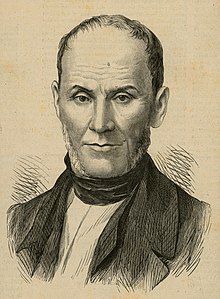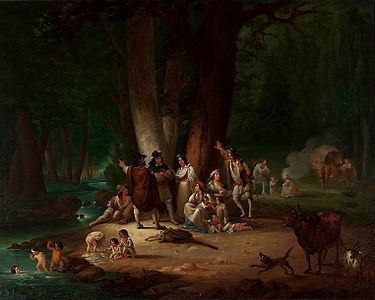Wincenty Smokowski
- Machine translation, like DeepL or Google Translate, is a useful starting point for translations, but translators must revise errors as necessary and confirm that the translation is accurate, rather than simply copy-pasting machine-translated text into the English Wikipedia.
- Consider adding a topic to this template: there are already 284 articles in the main category, and specifying
|topic=will aid in categorization. - Do not translate text that appears unreliable or low-quality. If possible, verify the text with references provided in the foreign-language article.
- You must provide copyright attribution in the edit summary accompanying your translation by providing an interlanguage link to the source of your translation. A model attribution edit summary is
Content in this edit is translated from the existing Lithuanian Wikipedia article at [[:lt:Vincentas Smakauskas]]; see its history for attribution. - You may also add the template
{{Translated|lt|Vincentas Smakauskas}}to the talk page. - For more guidance, see Wikipedia:Translation.

Wincenty Smokowski (Lithuanian: Vincentas Smakauskas; 19 February 1797, Vilnius — 13 February 1876, Krikonys, Ignalina Raion),[1] was a Polish-Lithuanian painter and illustrator in the Academic and Classical styles. He created portraits, historical scenes, landscapes and genre works; notably realistic, unprejudiced portrayals of Jews and Gypsies.
Biography
From 1817 to 1822, he studied at Vilnius University where he was a pupil of the English engraver and professor of Fine Art, Joseph Saunders.[2] From 1823 to 1829, he continued at the Imperial Academy of Arts in Saint Petersburg. He was awarded a silver medal in 1825 and a gold medal in 1827 for his version of the death of Epaminondas.[3]
In 1829, he was invited by Jan Rustem to become an assistant professor at the university. He held that position until 1832, when the university was closed by Russian authorities.[4]
In 1836, he graduated from the "Vilnius Medico-Surgical Academy" and worked as a doctor in the area around Švenčionys from 1841 to 1856. After two years in Warsaw, he practiced medicine from his wife's estate at Krikonys, a small village in the Ignalina region.[5]
In addition to his paintings, he provided illustrations for Konrad Wallenrod (1828) and Pan Tadeusz (1860) by Adam Mickiewicz and the poem Anafielas [pl] (1846) by Józef Ignacy Kraszewski. He is also known for copying and helping to preserve the 15th century frescoes at Trakai Island Castle.[5]
A street is named after him in the Pašilaičiai district of Vilnius.
Selected paintings
-
 Gypsy Encampment by a Creek
Gypsy Encampment by a Creek -
 Stephen Bathory founding the
Stephen Bathory founding the
Vilnius Academy -
 Jewish Wedding
Jewish Wedding -
 Entry of Bolesław the Brave into Kiev
Entry of Bolesław the Brave into Kiev
References
- ^ "Vincentas Smakauskas". vle.lt (in Lithuanian). Retrieved 10 November 2019.
- ^ Malinowski, Jerzy. (2010) in History of Art History in Central, Eastern and South Eastern Europe, Vol. 1. Society of Modern Art in the Department of History of Modern Art, Faculty of Fine Art, Nicolaus Copernicus University, Toruń. p, 11
- ^ Biographical notes @ Biografiya.ru
- ^ Biographical notes @ DESA Unicum.
- ^ a b Biographical notes @ Lithuanian Art Museum.
Further reading
- Olga Reichenstein-Mehlerowa, Wincenty Smokowski, Salesian School of Crafts, 1936
External links
 Media related to Wincenty Smokowski at Wikimedia Commons
Media related to Wincenty Smokowski at Wikimedia Commons















